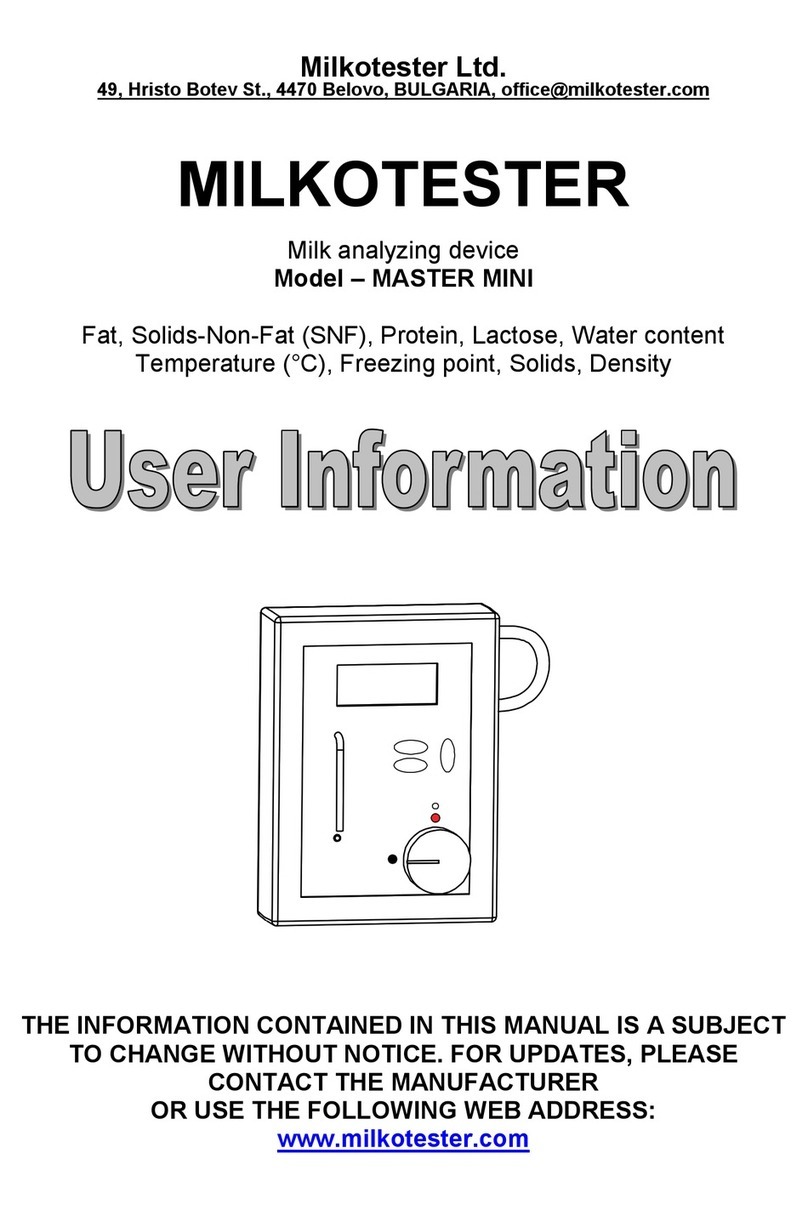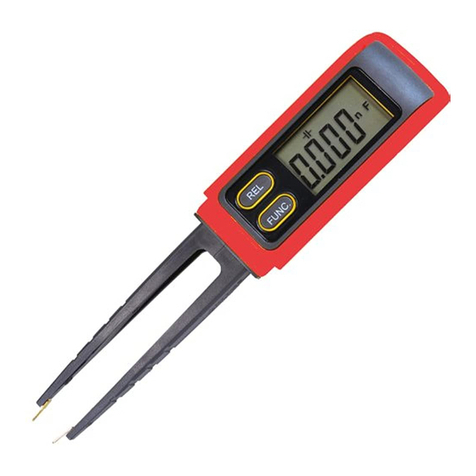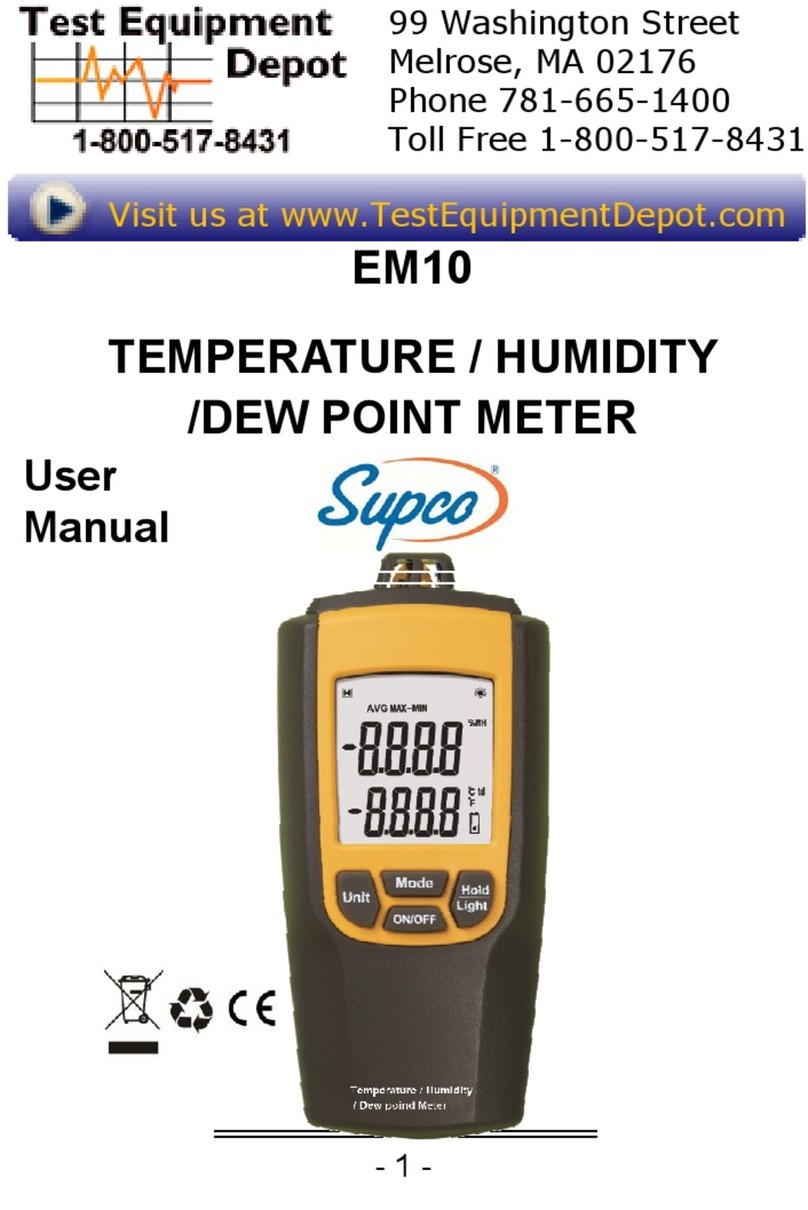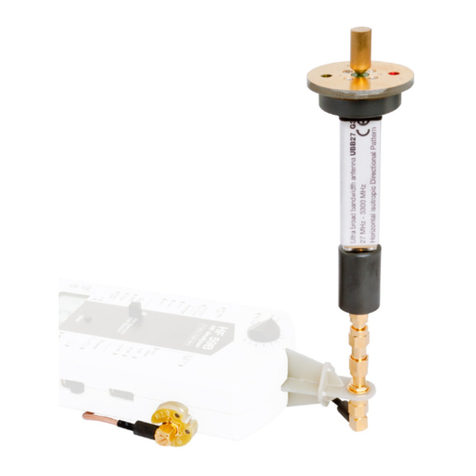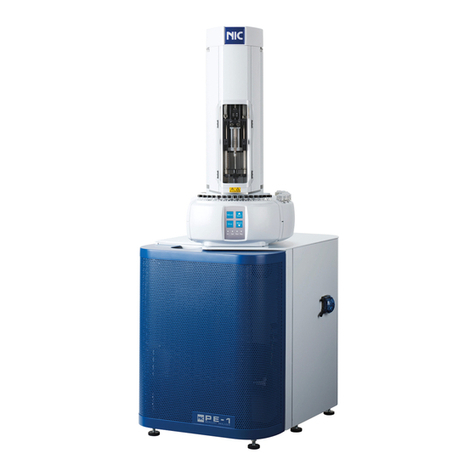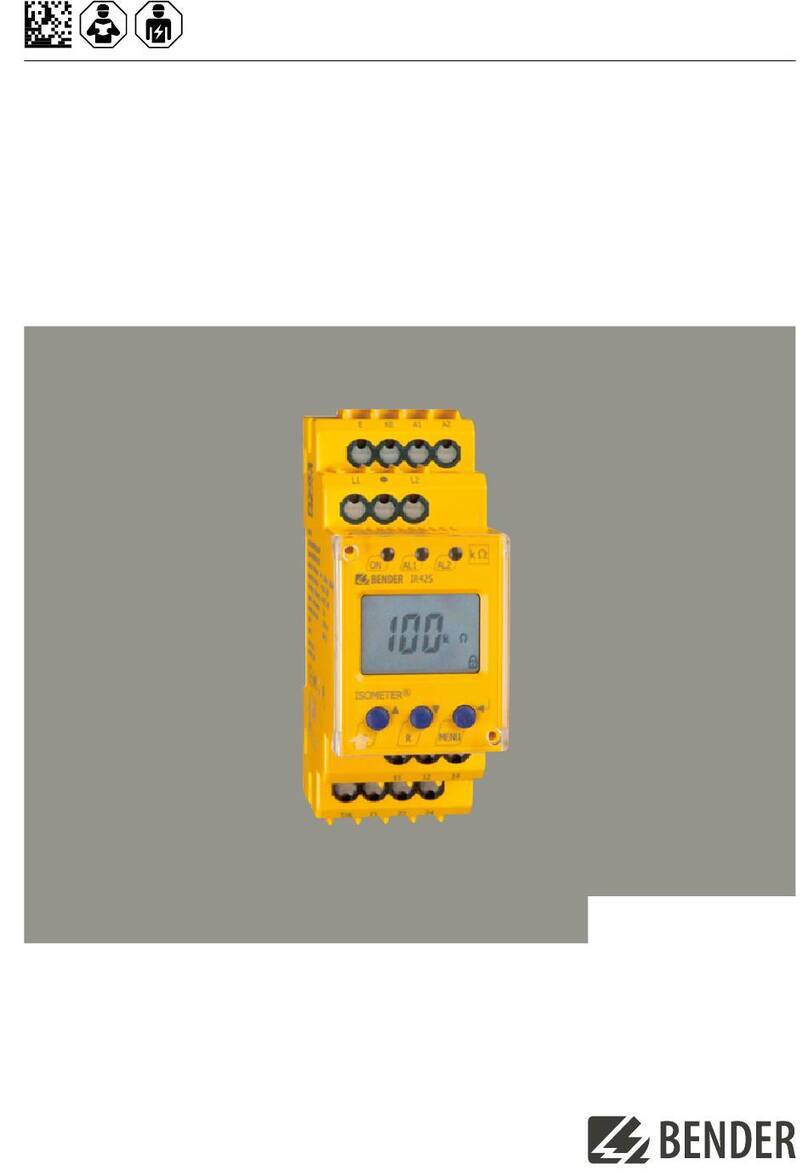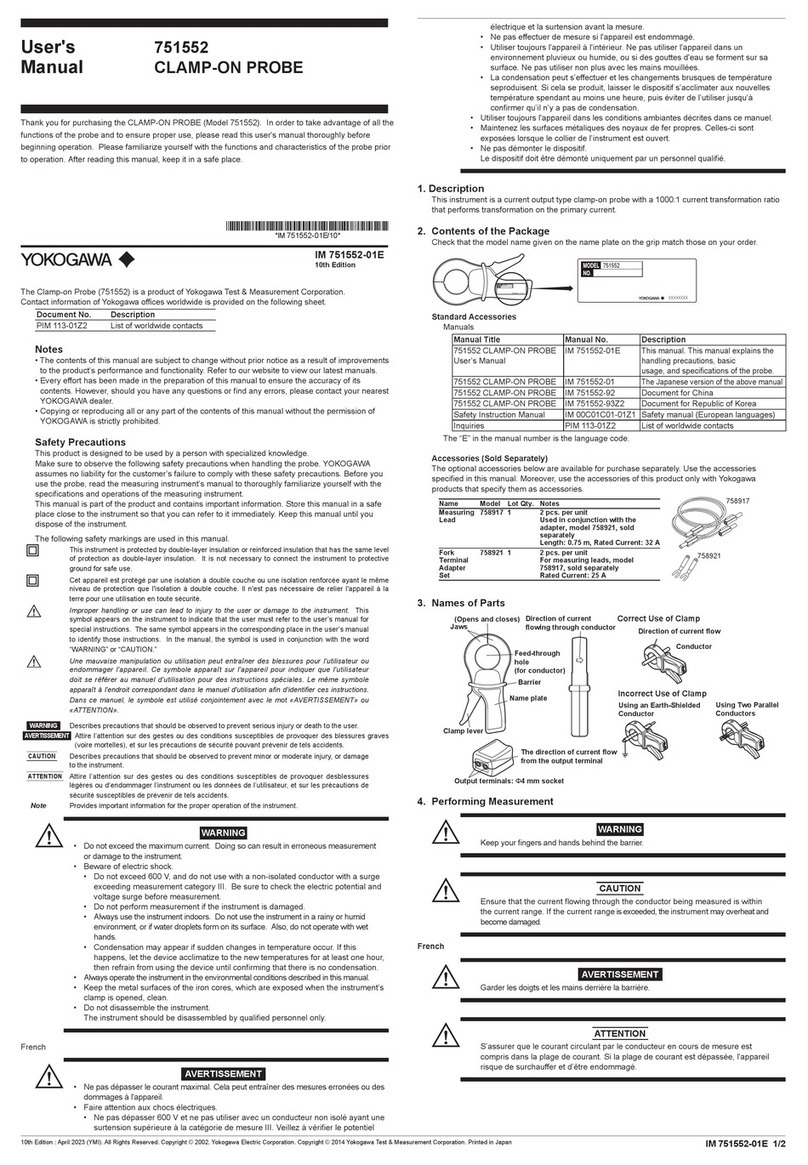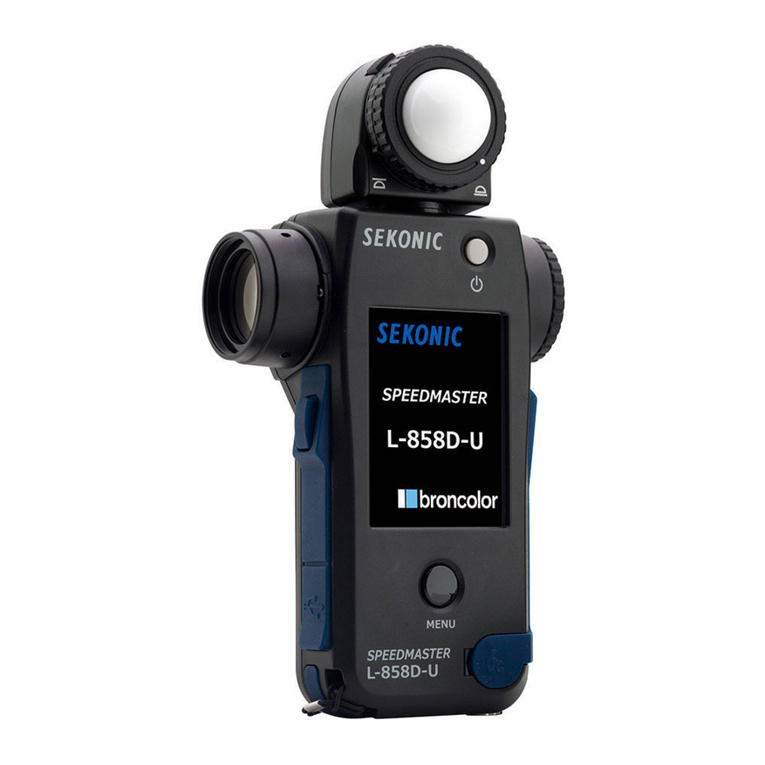ero electronic DPS User manual

DPSDPS
DPSDPS
DPS
DIGITAL PANEL INDICATOR
INSTRUCTION MANUAL
170.MAN.DPS.E00 0,5.5 - 97 / 3 B

2
DIMENSIONSANDPANELCUT-OUT
HORIZONTAL MOUNTINGHORIZONTAL MOUNTING
HORIZONTAL MOUNTINGHORIZONTAL MOUNTING
HORIZONTAL MOUNTING : Min distance between cut outs : 20 mm
PACKING OF MORE INSTRUMENT IN A SINGLE CUT OUTPACKING OF MORE INSTRUMENT IN A SINGLE CUT OUT
PACKING OF MORE INSTRUMENT IN A SINGLE CUT OUTPACKING OF MORE INSTRUMENT IN A SINGLE CUT OUT
PACKING OF MORE INSTRUMENT IN A SINGLE CUT OUT (max 10 instruments): The total dimension of the cut out is the addition of the
front dimensions minus 3 mm. Vertical dimension of the cut out = ( n x 48 ) - 3 mm where n is the number of instruments to be packed.
+ 0.8 mm
- 0.0 mm
+ 0.8 mm
- 0.0 mm

3
CONTENTSCONTENTS
CONTENTSCONTENTS
CONTENTS
SECTION1 GENERALINFORMATIONSECTION1 GENERALINFORMATION
SECTION1 GENERALINFORMATIONSECTION1 GENERALINFORMATION
SECTION1 GENERALINFORMATION
1.1 INTRODUCTION Page 5
1.2 PRODUCT SPECIFICATIONS 5
1.3 OPTIONS 8
1.4 CODING 9
1.5 LABELS 10
SECTION2SECTION2
SECTION2SECTION2
SECTION2 INSTALLATIONINSTALLATION
INSTALLATIONINSTALLATION
INSTALLATION
2.1 MOUNTING 12
2.2 WIRING GUIDE LINES 13
SECTION3SECTION3
SECTION3SECTION3
SECTION3 INSTRUMENTCONFIGURATIONINSTRUMENTCONFIGURATION
INSTRUMENTCONFIGURATIONINSTRUMENTCONFIGURATION
INSTRUMENTCONFIGURATION
3.1 FRONT PANEL DESCRIPTION 24
3.2 INSTRUMENT CONFIGURATION 27
SECTION4SECTION4
SECTION4SECTION4
SECTION4 OPERATINGINSTRUCTIONSOPERATINGINSTRUCTIONS
OPERATINGINSTRUCTIONSOPERATINGINSTRUCTIONS
OPERATINGINSTRUCTIONS
4.1 PRELIMINARY 40
4.2 OPERATIVE MODE 40
SECTION5SECTION5
SECTION5SECTION5
SECTION5 INSTRUMENTCALIBRATIONINSTRUMENTCALIBRATION
INSTRUMENTCALIBRATIONINSTRUMENTCALIBRATION
INSTRUMENTCALIBRATION
PROCEDUREPROCEDURE
PROCEDUREPROCEDURE
PROCEDURE
5.1 DIP SWITCHES LOCATION 43
5.2 GENERAL GUIDE LINES FOR CALIBRATION 44
5.3 CALIBRATION PROCEDURE 44
SECTION6SECTION6
SECTION6SECTION6
SECTION6 DEFAULTPARAMETERSSETTINGDEFAULTPARAMETERSSETTING
DEFAULTPARAMETERSSETTINGDEFAULTPARAMETERSSETTING
DEFAULTPARAMETERSSETTING
6.1 PRELIMINARY 54
6.2 DEFAULT PARAMETERS SETTING 54
6.3 DEFAULT CONFIGURATION PARAMETERS 54
6.4 DEFAULT CALIBRATION PARAMETERS 55
6.5 DEFAULT OPERATIVE PARAMETERS 55
SECTION7SECTION7
SECTION7SECTION7
SECTION7 ERRORMESSAGESERRORMESSAGES
ERRORMESSAGESERRORMESSAGES
ERRORMESSAGES
7.1 OUT OF RANGE 56
7.2 OPEN INPUT CIRCUIT 56
7.3 ERRORS 56
7.4 ERROR DESCRIPTIONS 57
APPENDIXAAPPENDIXA
APPENDIXAAPPENDIXA
APPENDIXA 62

5
SECTION 1 GENERAL INFORMATION
1.1 INTRODUCTION
The DPS is a family of digital panel indicators developed with a
variety of features for the solution of field problems.
As part of ERO ELECTRONIC background, this family also
maintains a high standard in quality, reliability and man/machine
interface simplicity, but it encompasses performance typically built
in very expensive instruments.
Features like frequency input, switching power supply, square root
extraction on the input variable, linearization by keyboard with the
setting of 9 breakpoints (10 segments), max. value data hold, min.
value data hold and analog retransmission of the displayed value
offer the widest range of possible application.
The two color custom integrated display with 4 numerical digit, 2
alphanumerical characters and 6 indicators, is an example of the
particular attention given to the design of the man/machine
interface.
The DPS comes with a complete availability of ranges from thermo-
couple, RTD and mA, digital filter, two logic inputs, two independent
alarmsanditcanbealsosupplied withserialcommunicationinterface
and a galvanically isolated auxiliary power supply.
1.2 PRODUCT SPECIFICATIONS
1.21 GENERAL SPECIFICATIONS
Case : PC/ABS black color; self-extinguishing degree : V-0
according to UL.
Front panel : IP 54 protection (IEC 529 and CEI 70-1).
Installation :panel mounting by means of tie rods.
Instrument removable from case by screwdriver help
Plug in construction :PC boards are assembled by snap in action
for easy inspection and replacement of all boards.
Rear terminal block: with screw terminals and completed with
identification labels, connection diagrams and safety rear cover.
Dimensions: DIN 43700 48 x 96 mm, depth 149 mm.
Cut-out : 45 x 92 mm +0,8 mm - 0,0 mm.
Weight : 600 g max.
Displays: LCD with high brightness solid state back lighter
numerical display: 4 digits, 7 segments with decimal point,
14.5 mm high, from -1999 to 9999.
alphanumerical display:2 digits, 16 segments with
decimal point, 9 mm high,
Front indicators: AL1- AL2- PK H- PK L- LOCK- REM.
Power supply: 100V to 240V AC 50/60Hz (-15% to +10% of the
nominal value).or 24 V AC/D.C ( +10% of the nominal value).
Power consumption : 8 VA max.
Insulation resistance: > 100 MΩaccording to IEC 348.
Dielectric strength: 1500 V in accordance with IEC 348.

6
Conversion: dual slope integration.
Resolution: 25000 counts
Sampling time: 100 ms typical.
Display updating time: 400 ms typical.
Accuracy: + 0.1 % fsv + 1 digit @ 25 °C ambient temperature.
Common mode rejection ratio: 120 dB @ 50/60 Hz.
Normal mode rejection ratio: 60 dB @ 50/60 Hz.
Noise immunity: according to IEC 801-4, level 3
Temperature drift: < 200 ppm/°C on fsv (CJ excluded)
Ambient temperature: 0 to 50 °C.
Storage temperature : -20 to +70 °C
Humidity: 20 to 85% RH, non condensing.
Protections:1) WATCH DOG circuit for automatic restart.
2) DIP SWITCHES for protection against tampering of
configuration and calibration parameters.
1.2.2 INPUTS
Inputs: 4 type of inputs are available:
A) Thermocouple: B - E - J - Fe/Cu Ni - K - N - R - S - T - Cu/Cu
Ni - W - W3 - W5 -PLATINEL - Ni/Ni 18%Mo.
Type of TC and °C/°F programmable.
External resistance: 100 Ωmax, with maximum error 0.1% of span.
Cold junction: automatic compensation 0 to 50 °C.
Burn out: up scale or down scale programmable.
Input impedance: > 1 MΩ
Standard ranges: see table, others on request.
Calibration : according to IEC 584-1 (if not specified)
STANDARD RANGES TABLE
1) Accuracy and resolution guaranteed from 300 °C (570 °F)
2) Resolution 1/10 °C up to 999.9 °C
TC
type
B
E
J
Fe-CuNi
K
R
S
T
Cu-CuNi
N
W
W3
W5
Ni/Ni-Mo
Platinel II
+32 / +3300 °F
-328 / +1470 °F
-328 / +1830 °F
-328 / +1650 °F
-328 / +2500 °F
-58 / +3200 °F
-58 / +3200 °F
-328 / +750 °F
-328 / +1110 °F
+32 / +2550 °F
+32 / +4190 °F
+32 / +4190 °F
+32 / +4190 °F
+32 / +2192 °F
+14 / +2550 °F
Ranges
0 / +1820 °C
-199.9 /+800.0 °C
-199.9 /+999.9 °C
-199.9 /+900.0 °C
-199.9 / +1370 °C
-50 / +1760 °C
-50 / +1760 °C
-199.9 /+400.0 °C
-199.9 /+600.0 °C
0 / +1400 °C
0 / +2310 °C
0 / +2310 °C
0 / +2310 °C
0 / +1200 °C
-10 / +1400 °C
NOTE
(1)
DIN 43710-1977
(2)
DIN 43710-1977
ASTM - E988/84
ASTM - E988/84
GE Co.
GHOST

7
B) Linear input
Input type: See table below
Readout: keyboard programmable between -1999 and +9999.
Linearization: input signal may be linearized by setting up to 9
breakpoints (10 segments) on the input span.
Square root estraction: programmable
Decimal point : programmable in any position.
Burn out: Up scale for 12-60 mV inputs;
down scale for 4-20 mA, 1-5 V and 2-10 V.
It is not detectable for the other ranges.
STANDARD RANGES TABLE
C) RTD (Resistance Temperature Detector)
Input: for RTD Pt100 Ωand Ni 100 Ω, 3 wire connection with °C/°F
selectable by front pushbuttons.
Input circuit: current injection (100 µA).
Line resistance: automatic compensation up to 3 Ω/wire with no
measurable error.
Calibration: according to DIN 43760
Standard ranges: see table
Burnout:upscaleordownscaleprogrammableforopencircuitofone
or more wires.
STANDARD RANGES TABLE
Input
type
- 199.9 / + 850.0 °C
- 60.0 / + 350.0 °C
- 328 / + 1560 °F
- 76 / + 660 °F
Ranges
RTD Pt 100 ΩΩ
ΩΩ
Ω
RTD Ni 100 ΩΩ
ΩΩ
Ω
Input
type
0 - 20 mA
4 - 20 mA
0 - 60 mV
12 - 60 mV
0 - 5 V
1 - 5 V
0 - 10 V
2 - 10 V
Accuracy
Input inpedance
3 Ω
3 Ω
> 800 kΩ
> 800 kΩ
> 200 kΩ
> 200 kΩ
> 200 kΩ
> 200 kΩ
0.1 % + 1 digit
@ 25°C

8
1.2.3 ALARMS
Number of alarms: two independent
Threshold: from 0 to 100 % of the readout span.
Hysteresis: programmable from 0.1 to 5.0 % of the readout span.
Type of alarm: High or low alarms programmable.
NOTE : The alarm becomes active at the alarm threshold value and
will be reset at the alarm threshold value plus or minus the
hysteresis value, according to the alarm type.
Reset: Automatic or Manual, programmable.
The manual reset of the alarms is possible by front
pushbuttons individually or by external contact collectively.
Alarm outputs: two relays, SPST, NC or NO selectable by
jumpers.
Contact rating:2A - 30 V DC or 0.6 A - 110 V DC or 0.5 A - 250 V
AC, on resistive load or 0.3 A - 110 V DC on inductive load.
Relay status: relay energized in no alarm condition.
Digital filter: it is possible to set, on the alarm function, a digital filter
with the same time constant chosen for the redout.
Alarms indication: AL1 and AL2 indicators lit for alarm ON status.
1.2.4 ADDITIONAL FUNCTIONS
Peaks detection : visualization of the max. and min. value meas-
ured by the instrument
Digital filter: it is possible to set a digital filter on the displayed value
with a time constant of 0.4, 1, 2, 3, 4 or 5 s. This filter can be set for
analog retransmission and alarms threshold also.
Logic input: one input by contact for manual reset of the alarms
or HOLD function enable.
Safety lock: for protection of the alarms threshold values.
1.3 OPTIONS
1.3.1 COMMUNICATION INTERFACE
Type: RS-485 optoisolated.
Communication type: bi-directional.
Protocol: "Polling/Selecting"
Baud rate: from 150 baud to 19200 baud.
Format: 7 bits + parity bit
8 bits + parity bit
8 bits without parity bit
Parity: odd or even
Stop bit: one

9
1.3.2 ANALOG RETRANSMISSION
Isolated analog retransmission of the displayed value.
Scaling: programmable between -1999 and 9999
Output type: 1) 0-20 mA or 4-20 mA, max. load 500 Ω, optoisolated
2) 0-10 V, minimum load 5000 Ω, optoisolated
Selection: between0-20mA,4-20mAand0-10V byinternaljumper
and frontal keyboard.
Resolution : max. 0.1 % of the output span.
Accuracy: 0.2 % of the output span (@ 25°C).
Temperature drift: < 100 ppm/°C.
Digital filter: it is possible to set a digital filter on the retransmitted
value with a time constant equal to the time constant selected for the
readout value.
NOTE: The analog retransmission excludes the serial interface op-
tion.
1.3.3 AUXILIARY POWER SUPPLY
Isolation: galvanically isolated from instrument input and output.
Voltage output: 5, 10, 12 or 24 V DC selectable by jumpers.
Accuracy : + 5 %
Max. power: 0.5 W
1.4 CODING
MODEL
DPS = Digital panel indicator
POWER SUPPLY
3 = 100 to 240 V AC
5 = 24 V AC/DC
INPUTS
9 = TC, mV, V, mA, RTD
ALARMS
1 = 2 alarms
OPTIONS
1 = Auxiliary power supply
2 = Analog retransmission (mA) + auxiliary
power supply
3 = RS-485 + Auxiliary power supply
4 = RS-485
5 = Analog retransmission (mA)
DPS _ 9 1 1 _ 0 0

10
Fig. 1.1 INSTRUMENT IDENTIFICATION LABEL
1.5 LABELS
1.5.1 IDENTIFICATION LABEL
The instrument identification label , see Fig. 1.1, is located externally
on the top rear of the housing.
It contains the following information:
a)The instrument Model Number on the left side column.
The model number includes the instrument code which allows the
instrument functions to be determined. Each code item contains a
brief description. A complete description of all the code items can
be found in chapter 1.5.
b)The instrument Serial Number on the bottom line.
1.5.2 ABRIDGED LABELS
Two abridged labels are provided to allow the instrument parts to be
identified.
They are located : (a) on the bottom of the card and display plastic
support; (b) internally on the bottom front of the housing.
TheabridgedlabelscontaintheModelNumberandtheSerialNumber
only.
MADE IN ITALY
MODEL
DPS
3
9
STATUS: XX XX
POWER SUPPLY: 100/240 V AC
INPUT : TC - RTD - MV - MA -V
XXXXX
SERIAL NUMBER: XX.XX.XXX
1 2 ALARMS
3RS 485 + AUXILIARY POWER SUPPLY
1

11

12
SECTION 2 INSTALLATION
2.1 MOUNTING
Selecta mountinglocationwhere there is
minimumvibrationandtheambient
temperaturemustbebetween 0and
50°C.
Theinstrument canbemounted ona
panel up to 15 mm thick with a cut out of
45 x 92 mm +0.8 mm
Removethe twomountingbrackets from
both sides of the
instrument,andinserttheinstrument
throughthepanelcut-out.
Whileholdingtheinstrumentagainstthe
panel,insertthemounting bracketsand
lock them by using a screwdriver until the
instrumentis heldagainstthe panel(see
Fig.2.1).
Fig. 2.1 HOW TO INSERT THE INSTRUMENT
-0 mm

13
2.2 WIRING GUIDE LINES
Connectionsare tobemadewith theinstrumenthousinginstalled in
itsproperlocation.
Fig.2.2 REARTERMINAL
A) POWER LINE
Fig. 2.3 POWER LINE WIRING
NOTE: 1) Before connecting the instrument to the power supply,
make sure that line voltage corresponds to lateral label
indication.
2)Terminal 11must beconnected toearth.
3) To avoid electric shock, connect power supply at the end
of the wiring procedure only.
4) The power supply input has no fuse protection.
Please, provide it externally.
9
10
11
100 V to 120 V AC
or 24 V AC/DC
LINE NEUTRAL
EARTH PWS
1
T/C
345679
1213141516171921
RTD
22
11
18
LOGIC
1mV
mA/V
INPUT
AL2C
AL2
B/B'
A/A'
C/C'
AL1
AL1C
mA
V
REMOTE VDC
SUPPLY
M0248-01
LN

14
B) INPUTS
Fig.2.4 THERMOCOUPLEINPUT WIRING
NOTE: Don’trun inputwires together withpower cables.
Usepropercompensating cablepreferablyshielded (see
Table1).
If shielded cable is used, the shield must be grounded at one
pointonly.
Pay attention to the line resistance; a high line resistance
may cause measurement errors (see PRODUCT SPECIFI-
CATIONS).
1 3 1 3 Fig. 2.5 RTD INPUT WIRING
NOTE: Don’t run RTD wires together with power cables.
If shielded cable is used, the shield must be grounded at one
pointonly.
Use copper wires with appropriate size (see "PRODUCT
SPECIFICATIONS").
The resistance of the 3 wires must be the same.
Anyexternal components(like zener barriersetc..) connected
betweensensor andinput terminalsmay causeerrorsin measure-
ment due to excessive and/or not balanced line resistance or
possibleleakagecurrents.
1 3 41 3 4

15
TABLE 1: THERMOCOUPLE COMPENSATING CABLE COLOUR CODES.
Thermocouple
Material
TCopper
Constantan
JIron
Constantan
KNichel Chromium
Nichel Aluminium
RPlatinum/ Platinum
13% Rhodium
SPlatinum/ Platinum
10% Rhodium
EChromel
Constantan
BPlatinum 30% Rh
Platinum 6 % Rh
NNicrosil / Nisil
British
BS 1843
+ White
- Blue
Blue
+ Yellow
- Blue
Black
+ Brown
- Blue
Red
+ Wite
- Blue
Green
+ White
- Blue
Green
+ Brown
-blue
Brown
-
-
-
American
ANSI MC 96.1
+ Blue
- Red
Blue
+ White
- Red
Black
+ Yellow
- red
Yellow
+ Black
- Red
Green
+ Black
- red
Green
+ Violet
- Red
Violet
+ Grey
- Red
Grey
-
German
DIN 43710
+ Red
- Brown
Brown
+ Red
- Blue
Blue
+ Red
- Green
Green
+ Red
- White
White
+ Red
- White
White
-
-
-
-
-
-
French
NFE 18-001
+ Yellow
- Blue
Blue
+ Yellow
- Black
Black
+ Yellow
- Purple
Yellow
+ White
- Green
Green
+ White
- Green
Green
-
-
-
-
-
-

16
Fig 2.6 mA INPUT WIRING
NOTE: Don’truninput wirestogetherwith powercables.
If shielded cable is used, the shield should be grounded at one point only (see fig. 2.6).
3 4 16 17
OUT POWER
_++_
34
16 17
+
_
_
+
4 3
4-wire transmitter with power supply2-wire transmitter with power supply2-wire transmitter without power supply

17
Fig. 2.7 mV INPUT WIRING
NOTE: Don’t run input wires toghether with power cables.
Use proper cable preferably shielded.
If shielded cable is used, the shield must be grounded at
one point only.
Pay attention to the line resistance; a high line resistance
may cause measurement errors.
Fig. 2.8 V INPUT WIRING
NOTE: Don’t run input wires toghether with power cables.
Use proper cable preferably shielded.
If shielded cable is used, the shield must be grounded at
one point only.
Pay attention to the line resistance; a high line resistance
may cause measurement errors.
4-wire transmitter
with power supply 4-wire transmitter
with power supply
2-wire transmitter
without power supply
4 3
_
+
3 4 16 17
OUT POWER
_++_
13
_
+
31
16 17
OUT POWER
_++_
2-wire transmitter
without power supply

18
C) EXTERNAL ALARM RESET OR HOLD FUNCTION
It is possible to reset both alarms of the instrument or hold the
measuredvalue byan externalswitch.
Fig. 2.9 - EXTERNAL ALARM RESET WIRING
D) LOCAL / REMOTE OPERATION
It is possible to operate the instrument in local mode or in remote
mode. When the instrument is in remote mode it is under the control
of a serial link.
Fig. 2.10 LOCAL / REMOTE WIRING
6
7
18
19
E) OUTPUTS
E.1 ALARMS RELAY OUTPUT
Fig. 2.11 ALARM 1 RELAY WIRING
Fig. 2.12 ALARM 2 RELAY WIRING
The relay output is an SPST relay, protected with snubber network.
Thecontact ratingsare: 2 A / 30 V DC on resistive load or
0.6 A / 110 V DC on resistive load or
0.5 A / 250 V AC on resistive load or
0.3 A / 110 V DC on inductive load.
The number of operations is 2 x 105at specified rating.
15
14
13
12

19
E 1. INDUCTIVE LOADS
Switchinginductive loads,highvoltagetransients mayoccur.
Thesetransients maydamage theinternal contacts,PCB oraffect
theperformance ofthe instrument.Inthis carean externalsnubber
network should be connected across the terminals as near as
possibleto theterminals (seeFig.2.13).
Fig. 2.13 EXTERNAL PROTECTION FOR INDUCTIVE LOAD
GREATER THAN 40 mA AC
The value of capacitor (C) and resistor (R) are shown in the following
table.
C
C
C
C
NC R
NO
C
NC
R
The same problem may occur when a switch is used in series with
the internal contacts as shown in Fig. 2.14
Fig.2.14
In this case it should be better to protect the switch also as shown in
Fig. 2.14. Anyway the cable involved in relay output wiring must be
as far away as possible from input or communication cables.
LOAD
CURRENT
< 40 mA
< 150 mA
< 0.5 A
C
(µF)
0.0022
0.1
0.33
R
(Ω)
100
22
47
RESISTOR
POWER (W)
1/2
2
2
RESIST. AND
CAPAC. VOLTAGE
260 VA.C.
260 VA.C.
260 VA.C.
C
RLOAD
R
CPOWER
LINE

20
E 1.2 EXTERNAL LOADS WITH VERY LOW HOLDING
CURRENT
Itmay happenthatthe currentflowingthrough thesnubbernetwork,
when the contact is open, is sufficient to energize the external load
(normallyacontactor).
A similar problem may occur when driving solid state relay with
theinternalrelay oftheinstrument.
Thecurrent flowingthrough the snubbernetwork maykeepthe
voltage across the SSR higher than the cutoff level.
In this case it is better to remove the snubber network or to connect,
across the load, a resistor of appropriate value and power rating.
22
21
_
+LOAD
E.2 ANALOG RE-TRANSMISSION
Fig.2.15 ANALOGRE-TRANSMISSION WIRING
NOTES : 1) for mA output the maximum load impedance is 500 Ω.
2) For V output the minimum load impedance is 5000 Ω.

21
E.3 SERIALINTERFACE
RS-485 interface allows to connect up to 31 instrument with the
remotemaster unit.SeeFig.2.17.
Fig. 2.16 - RS-485 WIRING
The cable length must not exceed 1.5 km at 9600 BAUD.
NOTE: The following report describes the signal sense of the voltage
appearing across the interconnection cable asdefinedbyEIA
forRS-485.
a) The”A”terminal ofthegeneratorshallbe negativewithrespect
to the ” B ” terminal for a binary 1 (MARK or OFF) state.
b) The”A”terminal ofthegeneratorshallbe positivewithrespect
to the ” B ” terminal for a binary 0 (SPACE or ON)
21
22 COMMON
20 M
A
S
T
E
R
I
N
S
T
R
U
M
E
N
T
B'/B
B/B'
A/A' A'/A
I
N
S
T
R
U
M
E
N
T
Fig. 2.17- CONNECTION OF THE INSTRUMENTS (MAX 31) TO
THE MASTER UNIT BY INTERFACE COMMUNICA-
TION TYPE RS-485
21
22 COMMON
20 M
A
S
T
E
R
21
22
20
I
N
S
T
R
U
M
E
N
T
B'/B
B/B'
A/A' A'/A
Table of contents
Other ero electronic Measuring Instrument manuals
Popular Measuring Instrument manuals by other brands
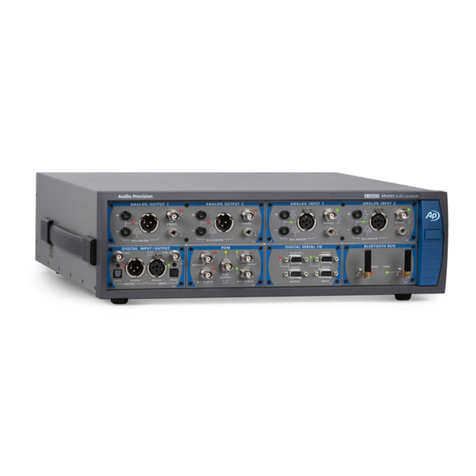
Audio Precision
Audio Precision AP 52 B Series Installation Instructions and Specifications
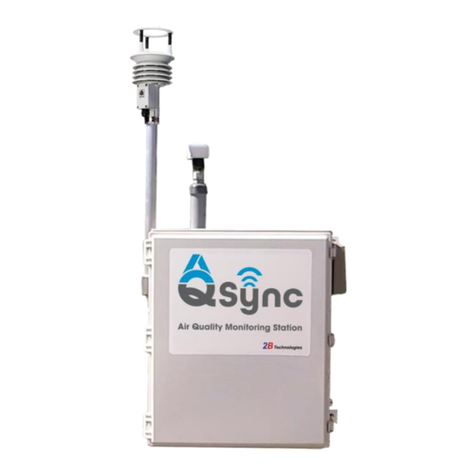
2B Technologies
2B Technologies AQSync Operation manual
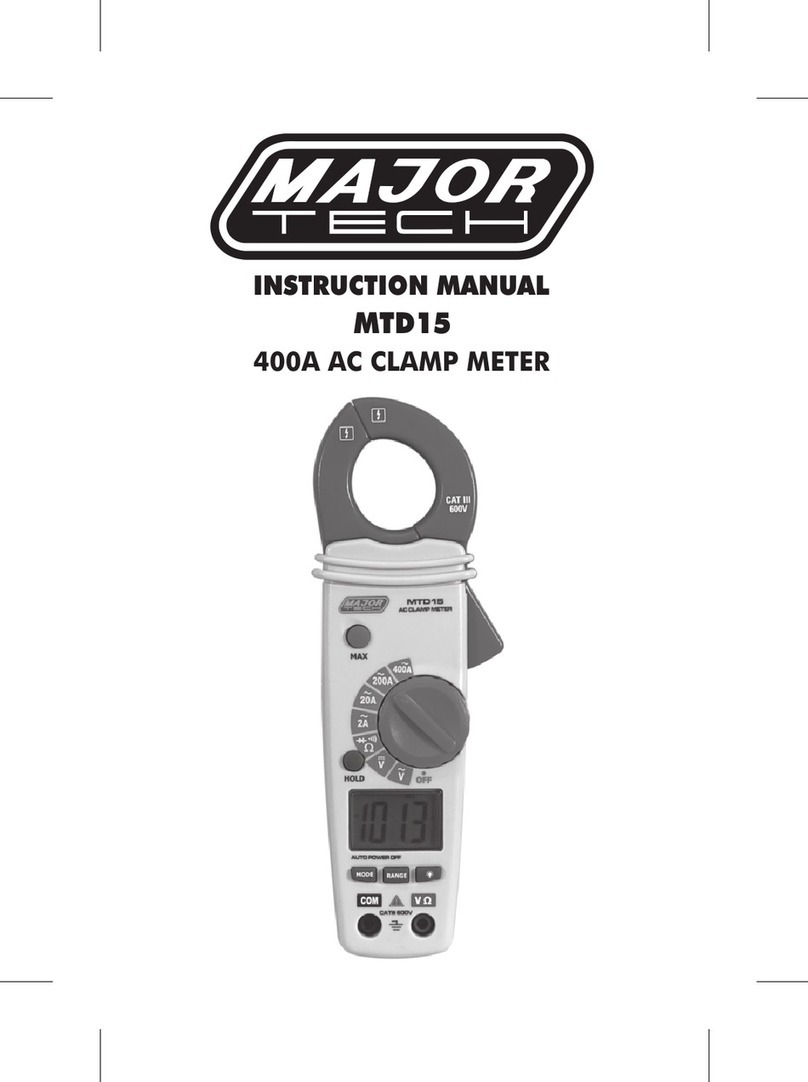
Major tech
Major tech MTD15 instruction manual

Swann
Swann AMU Pharmacon Operator's manual
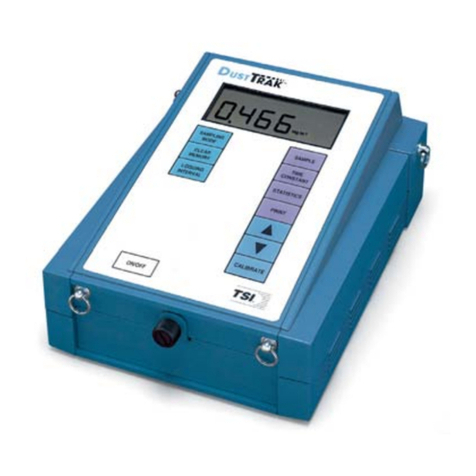
TSI Instruments
TSI Instruments DustTrak 8520 Operation and service manual

MasterCraft
MasterCraft 052-0729-4 instruction manual



